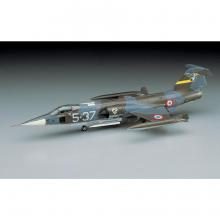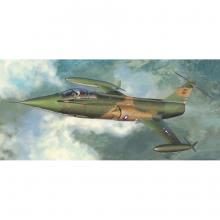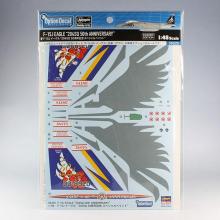Shipping and Returns
Europe, UK: Tuesday, Nov 18 ~
USA: Sunday, Nov 16 ~
Australia: Tuesday, Nov 18 ~
Asia: Monday, Nov 17 ~
UAE: Tuesday, Nov 18 ~
Order within 5 Hours 21 mins with Scheduled Delivery. If you place an order within this time, We will ship Monday, Nov 17 2025. This delivery time is calculated by DHL and FedEx. You can check the exact delivery date on checkout page.
USA: Sunday, Nov 16 ~
Australia: Tuesday, Nov 18 ~
Asia: Monday, Nov 17 ~
UAE: Tuesday, Nov 18 ~
Order within 5 Hours 21 mins with Scheduled Delivery. If you place an order within this time, We will ship Monday, Nov 17 2025. This delivery time is calculated by DHL and FedEx. You can check the exact delivery date on checkout page.
Buyer Protection
Full refund if not genuine. Full or partial refund, if the new item is not as described.
Customer Reviews (0 rating)
No reviews on this item...
Description (3,348 characters)
Released in October 2024
HASEGAWA 1/72 Aircraft Series Mitsubishi F-1. HC3F1 Released in October 2024
[Product introduction]
HASEGAWA 1/72 aircraft series Mitsubishi F-1. The Mitsubishi F-1 is a support fighter for the Air Self-Defense Force that was developed from the T-2 trainer aircraft. As the first domestically produced supersonic jet fighter, development began in 1972 and procurement began in 1975. In the past, the F-86F was used as a support fighter, but in order to carry out full-scale support fighter operations, the Air Self-Defense Force considered introducing the F-5E Tiger II, but it was in the operational stage at the time. It was decided to be a fighter modification plan for the T-2 trainer aircraft. Development of the FS-T2 Kai (later F-1) began, and for this purpose T-2 mass-produced aircraft No. 106 and No. 107 were completed as T-2 special specification aircraft for flight tests, and various system tests and We conducted a flight test. Based on the results of these various tests, the Director-General of the Defense Agency approved the use of the unit on November 14, 1975, and at the same time, the official name was decided from FS-T2 Kai to Support Fighter F-1. F-1 deployment began in 1952 and was sequentially deployed to the 3rd Squadron at Misawa Base, the 8th Squadron at Misawa Base, and the 6th Squadron at Tsuiki Base, replacing the F-86F. The F-1 is a support fighter, but it is also used as an operational interceptor fighter. For this reason, various types of weapons are installed. During interception missions, it is equipped with air-to-air missile Sidewinder, and during support combat, it is equipped with 500lb bombs, anti-ship missiles, and 70mm or 127mm rockets. When the F-1 was modified from the T-2 to carry out these various missions, it was equipped with enhanced search and tracking radar, additional equipment such as a radio altimeter and atmospheric specification calculator, a radar warning device, a strike camera, etc. We are making additional modifications to the installation pylon, etc. Among these modifications and additional equipment, the F-1's distinctive equipment is the J/AWG-12 radar and the J/ASQ-1 control computer. This device is an important device for performing accurate bombing. It calculates information from radar, head-up display (HUD), inertial navigation device, radio altimeter, atmospheric specification calculator, etc. and outputs the optimal information to HUD and radar. This device also has an automatic mode, which projects the impact point and flight path there on the HUD, and when the pilot performs a projectile operation, it calculates the optimal time to release the projectile and automatically releases the projectile. The F-1 began to be equipped with an autopilot system in 1988, when it was still in production, and it was also installed on older aircraft during periodic repairs. This reduced the burden on the pilot and enabled him to carry out reliable attack missions. Additionally, due to the nature of the mission, the aircraft often flies at extremely low altitudes, which caused collisions with birds to become a problem, but this was resolved by making the fixed windshield made of sturdy polycarbonate and creating a one-piece canopy without a frame.
[Product specifications]
1/72 scale unpainted assembly kit□
HASEGAWA 1/72 Aircraft Series Mitsubishi F-1. HC3F1 Released in October 2024
[Product introduction]
HASEGAWA 1/72 aircraft series Mitsubishi F-1. The Mitsubishi F-1 is a support fighter for the Air Self-Defense Force that was developed from the T-2 trainer aircraft. As the first domestically produced supersonic jet fighter, development began in 1972 and procurement began in 1975. In the past, the F-86F was used as a support fighter, but in order to carry out full-scale support fighter operations, the Air Self-Defense Force considered introducing the F-5E Tiger II, but it was in the operational stage at the time. It was decided to be a fighter modification plan for the T-2 trainer aircraft. Development of the FS-T2 Kai (later F-1) began, and for this purpose T-2 mass-produced aircraft No. 106 and No. 107 were completed as T-2 special specification aircraft for flight tests, and various system tests and We conducted a flight test. Based on the results of these various tests, the Director-General of the Defense Agency approved the use of the unit on November 14, 1975, and at the same time, the official name was decided from FS-T2 Kai to Support Fighter F-1. F-1 deployment began in 1952 and was sequentially deployed to the 3rd Squadron at Misawa Base, the 8th Squadron at Misawa Base, and the 6th Squadron at Tsuiki Base, replacing the F-86F. The F-1 is a support fighter, but it is also used as an operational interceptor fighter. For this reason, various types of weapons are installed. During interception missions, it is equipped with air-to-air missile Sidewinder, and during support combat, it is equipped with 500lb bombs, anti-ship missiles, and 70mm or 127mm rockets. When the F-1 was modified from the T-2 to carry out these various missions, it was equipped with enhanced search and tracking radar, additional equipment such as a radio altimeter and atmospheric specification calculator, a radar warning device, a strike camera, etc. We are making additional modifications to the installation pylon, etc. Among these modifications and additional equipment, the F-1's distinctive equipment is the J/AWG-12 radar and the J/ASQ-1 control computer. This device is an important device for performing accurate bombing. It calculates information from radar, head-up display (HUD), inertial navigation device, radio altimeter, atmospheric specification calculator, etc. and outputs the optimal information to HUD and radar. This device also has an automatic mode, which projects the impact point and flight path there on the HUD, and when the pilot performs a projectile operation, it calculates the optimal time to release the projectile and automatically releases the projectile. The F-1 began to be equipped with an autopilot system in 1988, when it was still in production, and it was also installed on older aircraft during periodic repairs. This reduced the burden on the pilot and enabled him to carry out reliable attack missions. Additionally, due to the nature of the mission, the aircraft often flies at extremely low altitudes, which caused collisions with birds to become a problem, but this was resolved by making the fixed windshield made of sturdy polycarbonate and creating a one-piece canopy without a frame.
[Product specifications]
1/72 scale unpainted assembly kit□










